History
Making the Muslim World: Pre-Islamic Arabia
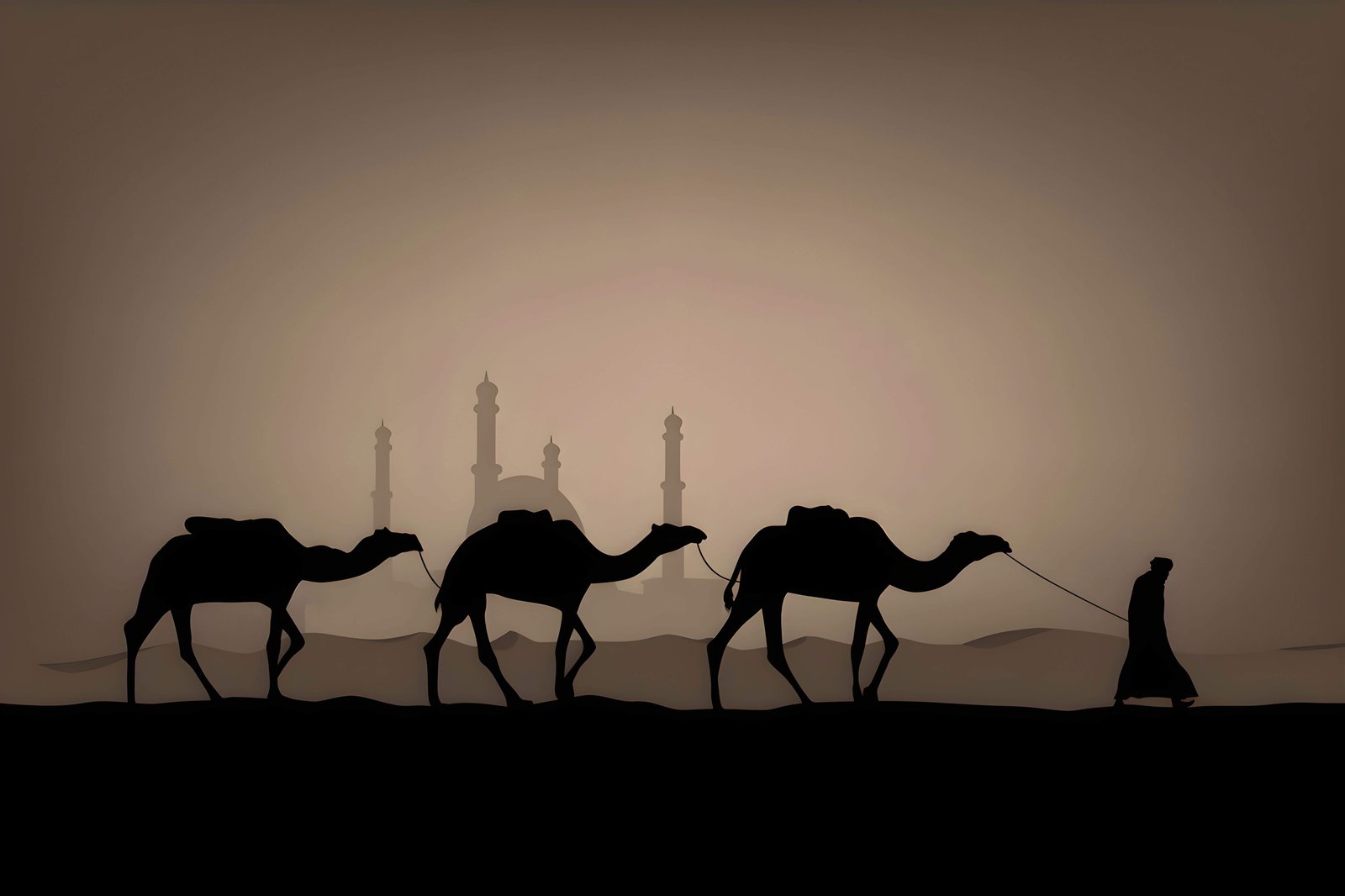
The common narrative about pre-Islamic Arabia is pretty straightforward and simple: the Arabs were polytheistic pagans who worshipped many different gods before the arrival of Islam. The main source of this narrative describing pre-Islamic Arabia has been the seerah, or biography literature, of the Prophet Muhammad, written by Muslim authors a few centuries after his life. These are good sources, and a lot of the information in them is confirmed by archaeological evidence. However, most of these accounts were written with a specific purpose; to legitimize the Islamic monotheistic tradition as triumphant or to contrast with the backwardness of the pre-Islamic Arabs. Paganism was an established trope that was used to bring sharp relief to the distinction between Islamic practice and what came before. Thus, it would be fair to say that these accounts are biased and that the people that are talked about—those who practiced the polytheistic religions of pre-Islamic Arabia—had no say in telling the story about their religious tradition. And therefore, to get a picture that is more balanced, nuanced, and historically accurate, we must look beyond.
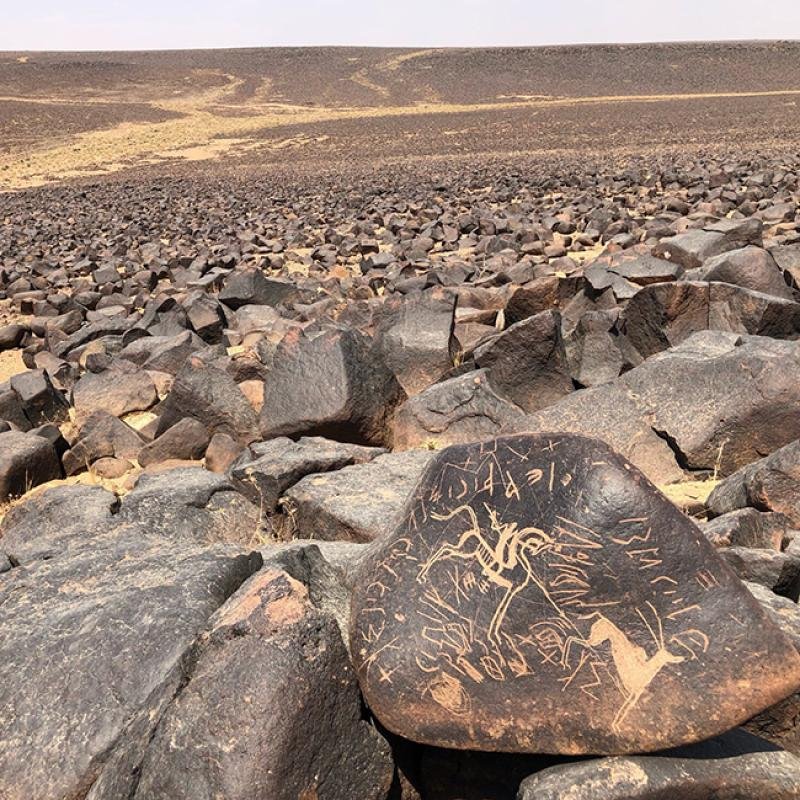
However, we are helped by an explosion of activity when it comes to the exploration of ancient Arabia. Archaeological excavations and expeditions are turning up some revolutionary findings. For instance, rock inscriptions from the ancient Arabs now give us first-hand accounts of the culture, tradition, and religion of this lost culture. And once we start to look at the new scholarly and archaeological findings, a picture emerges that is more developed and nuanced than the simple classical narrative presented at the beginning. With the latest scholarly research in mind, let us look at the fascinating world of religion in pre-Islamic Arabia.
Pre-Islamic Arabia provides us with enormous periods in which things could differ and change dramatically. However, for this article, we will focus primarily on the period immediately preceding the Prophet Muhammad, the eve of Islam.

Geography of Arabia
The Arabian Peninsula covers an area of over 2 million square kilometers. Situated between Asia, Africa, and Europe, the Arabian Peninsula is unique in its connection with all three continents of the Old World. Despite its position, it has mostly been ignored by outsiders: the Ancient Egyptians chose to expand into the Fertile Crescent rather than venture into Arabia’s deserts. Alexander the Great passed by it in the 300s BCE on his way to Persia and India. The Great Roman Empire attempted to invade the peninsula through Yemen in the 20s BCE but failed to annex the region.
One could hardly blame outsiders for ignoring the Arabian Peninsula. Its dry climate is barely hospitable, even for the nomads who live there. Monsoon winds bring seasonal rains to the southern coast of the peninsula in the autumn, but the quickly rising landscape stifles these. Similarly, rain barely touches the northern extremities of the Arabian Desert. The result is that the vast majority of the peninsula remains dry year-round. Parched riverbeds, known as wadis, run throughout the land, yet they can barely be called rivers. When clouds gather and rains fall, they become gushing and powerful waterways, essential for the growth of the seasonal flora that manages to bloom in this dry land. Once the wet season is over, however, wadis turn to their usual, dry state. More reliable are the oases—small fertile spots surrounded by the vast expanse of the desert. They were capable of serving hosts to small communities, or travellers, but were hardly enough to sustain an advanced and large society.
Lifestyle and Tradition in Pre-Islamic Arabia
Civilizations are shaped by the environment in which they develop, and the people of pre-Islamic Arabia were no exception. Everything about the life of Arabs was influenced by the environment in which they lived.
As the deserts could not support settled civilization, the Arabs lived a nomadic life, constantly on the move in search of fertile land for their flocks. According to a theory, the term “Arab” comes from a Semitic root meaning “wandering” or “nomadic.” The Arabs would spend summers around whatever oases or wells they could rely on year after year. After months of enduring the summer heat, they would migrate to the south, where rain fell in the autumn and fertile land appeared for their herds. This gave their flocks of sheep, goats, and camels enough food to live off through winters as they would temporarily settle. By the time the rains stopped and the dry season began, the Arabs returned to their oases and wells to wait out another summer. This cycle has been the norm for the Arabs since time immemorial, and it remains in place for the Bedouin Arabs living in Arabia’s deserts.
These harsh landscapes also brought in other challenges and dangers. With so many threats to the survival of the Arabs, community cooperation became essential. Reliance on relatives was the first defence against natural calamities such as famine, and the heat that constantly threatened survival. Families were expected to share resources and shelter, and the concept of individualism was frowned upon. Thus, the family and tribe became the most important units within Arab society. Groups of families travelled together and were considered a qabilah, or clan. Several clans constituted a tribe, led by a tribal leader called a shaikh. Tribal identity and belonging were vital in pre-Islamic Arabia, as they brought protection, support, and economic opportunities. Tribes would go to battle to defend one of their own, and tribal warfare was unnervingly common before the arrival of Islam. For the Arabs, struggle was a constant, against both man and nature.
Art in Pre-Islamic Arabia
In a tribal, nomadic society like that of pre-Islamic Arabia, artistic expression was difficult. The resources and time necessary to complete great sculptures and paintings like those of the ancient civilizations of Egypt and Greece were almost nonexistent. Yet the natural human desire to search for beauty could not be extinguished. Instead, it took on a new form: language. Perhaps more than any other language in the world, Arabic itself is a form of artistic expression. Words and sentence structure are fluid, creating many different ways for a person to express the same idea.
Thus, poetry naturally became the de facto art of Arabia; long, epic poems glorifying tribes and heroism in war were their greatest works of art. The finest poets were revered celebrities, and their words were memorized and repeated for generations. The seven most magnificent pre-Islamic poems, known as the Mu’allaqat, meaning “the hanging ones,” were so called because they were hung on the walls of the Ka’ba in Mecca, or figuratively because they were hung in the hearts of all Arabs due to their reverence for the poetic literature. Despite being an advanced literary society, writing was rare in pre-Islamic Arabia. While the written form of the language did exist by the 500s, it was rarely learned. Memorization was enough for the Arabs, who were capable of learning poems that were thousands of lines long by heart so they could repeat them to future generations. This memorization would prove to be a vital skill after the arrival of Islam in the peninsula in the 600s.
Religion in Pre-Islamic Arabia
The Middle East was dominated by two major empires: the Byzantine (or Roman) Empire and the Persian (Sassanid) Empire. Arabia was sandwiched between these two mighty empires. The Byzantine Empire was made up of a population that was predominantly Christian. On the other hand, the Persians generally followed the Zoroastrian religion.
The Arabs were not a unified or homogenous group of people. The Arabian Peninsula consisted of many different tribes and clans, whose affiliations and traditions differed vastly. For instance, the Lakhmids of north-eastern Arabia allied with the Persian Empire and were primarily polytheistic. On the other hand, the Ghassanids of Northwestern Arabia were predominantly Christians who served as a client state for the Byzantine Empire. This shows the diversity of religion, and things get more intriguing when we look at the various archaeological evidence that has emerged since.
Existence of Polytheism in Pre-Islamic Arabia
Foremost, we can conclude that most of the inhabitants of the Arabian Peninsula historically followed polytheism or paganism. The details of this religious tradition are quite obscure and unknown, but we do know a few things:
The ancient Arabs worshipped several different deities and gods, some associated with a specific place or tribe.
There were also sanctuaries for different deities around Arabia that worshippers could visit. Many of these deities had representations of natural phenomena or abstract concepts. One example is the god Shams, which means sun.
We also have many other famous deities, including Al-Lat, a goddess of fertility. Al-Lat is linked with the Aphrodite of the Greek Pantheon and the Ishtar of Mesopotamian mythology.
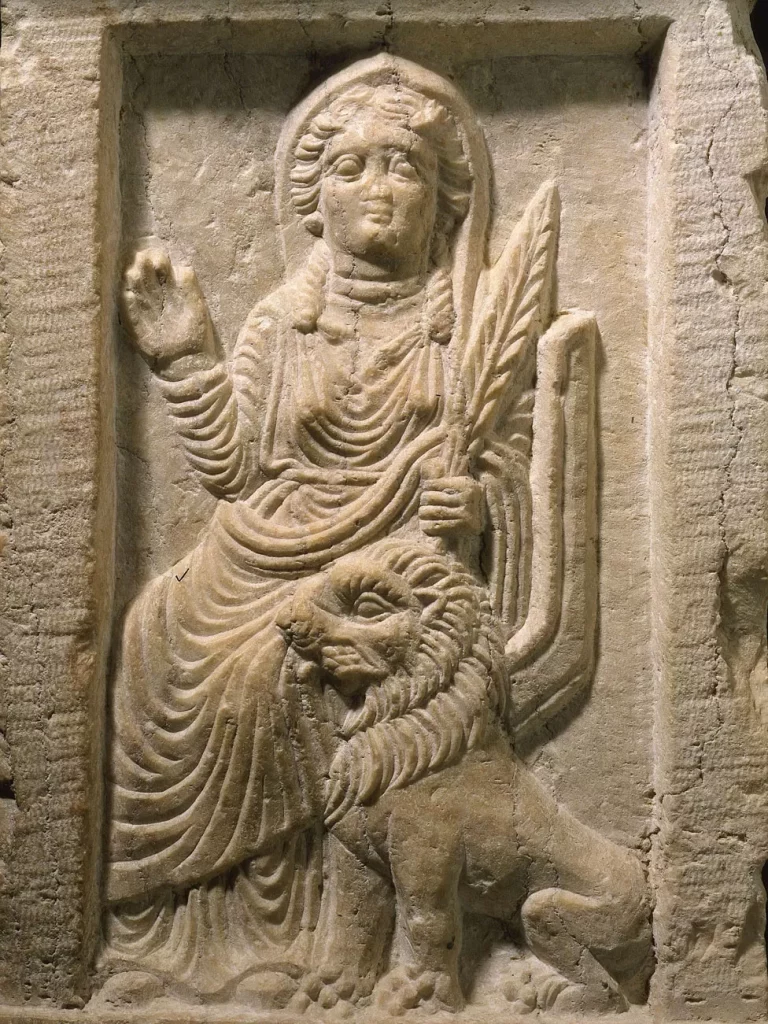
A lot of these deities that are mentioned on the rock carvings have been found and seem to have played a major role for the ancient Arabs. Another central deity was Rudaw, which was associated with the moon and sometimes considered the father of Al-Lat. Rudaw was a powerful god who was particularly associated with the region of Chaldea in southern Mesopotamia.
These are just a few examples of the many different gods that the Arabs would worship, who could be invoked for many different reasons, most commonly for mundane things like good health or to help with various troubles in life. The historian Robert J. Hoyland writes that gods represented those forces that were important to the lives of their devotees but were beyond their control. For example, rain, fertility, health, love, death, etc. By seeking the favour of god(s), one might thereby influence these forces.
Aside from these prayers, the deities were worshipped through various rites. The worshippers made offerings to the gods with things such as food. Like in so many other cultures, animal sacrifice played a major role in their religious beliefs. Animals, often camels, would be sacrificed before major events or to aid in the effectiveness of certain prayers.
Moreover, certain gods could be associated with a specific tribe and act as the protector of that tribe while other gods were more universal and worshipped across a wider population, such as the god Al-Lat. We also find regional preferences, since the tribes and the various groups of Arabia differed on several accounts. So we find certain gods that are specifically popular in southern Arabia while other gods are more popular in northern Arabia. Arabia, after all, was a diverse religious environment.
Additionally, the people of Arabia had different lifestyles; some Arabs were nomads who moved around and lived in desert environments, while others lived in developed city environments. These different circumstances also affected the religious traditions and practices that the Arabs would partake in.
The Monotheistic Community in Pre-Islamic Arabia
As mentioned earlier, the religious landscape of ancient Arabia was quite diverse and complex, and there were a lot of different religious traditions and movements that coexisted on this peninsula. In addition to polytheism, there existed various forms of monotheism too as indeed, Arabia was very much involved in the wider political and social context of the Middle East at the time, including the cultures of the two great empires. There were many different religious groups on the Arabian peninsula, including many Jewish tribes as well as Christians of various denominations. For instance, the Ghassanids, who were often vassals to the Byzantine empire followed monophysite Christianity and it is quite likely that there lived Christian groups further inside the peninsula as well, even if they weren’t as numerous as the Jews. There were also Zoroastrians living in Arabia at the time. All of this helps us get a picture of the quite diverse and complex religious milieu, suggesting that monotheism was quite common in Arabia at the time. Though of course, it differed from region to region and from different cities. The city of Mecca was largely polytheistic while the city of Yathrib – later known as Medina – housed a large number of Jewish communities, which were monotheistic in nature.
The presence of monotheism in Arabia can also be seen very clearly in a lot of the archaeological evidence. There even seem to have been monotheistic communities in Arabia that were neither Jewish, nor Christian, but who considered themselves as belonging to a primeval original monotheism of Abraham. In the Islamic tradition, this independent monotheistic community or group is known as the Hanifia, although there is less evidence of them in the archaeological record.
Pre-Islamic Arabia to Islam: Continuity & Contrast
Looking from a historical perspective, we can see that some of the central aspects of the Islamic religion come from pre-Islamic Arabia, including the name God, Allah – the primary name of God in Islam. The precise etymological origins of the name have been debated. Still, several scholars believe that it is an abbreviated form of Al-Ilah, meaning literally, the God. Illah is the Arabic word for God or divinity, and Al is the definite article. The archaeological record also supports this. We have inscriptions by north Arabian Christians in pre-Islamic times that refer to their god precisely as Al-Ilah. Similarly in Southern Arabia – modern-day Yemen – there appears to have been a period of monotheistic flourishing either through the influence of Judaism and its adoption by the state or through some independent form of monotheism. In the South Arabian context, the monotheistic god was referred to as “Rehmanan.” In the South Arabian dialect, the definite article was not the prefix ‘Al’ as in the northern equivalent or classical Arabic, but rather the suffix. Therefore, if we transpose the name to classical Arabic, this name for god becomes “Al-Rehman,” another one of the primary names of God in Islam. Moreover, in this South Arabian context, god was also called ‘Ilahan,’ or transposing, Al-Ilah.
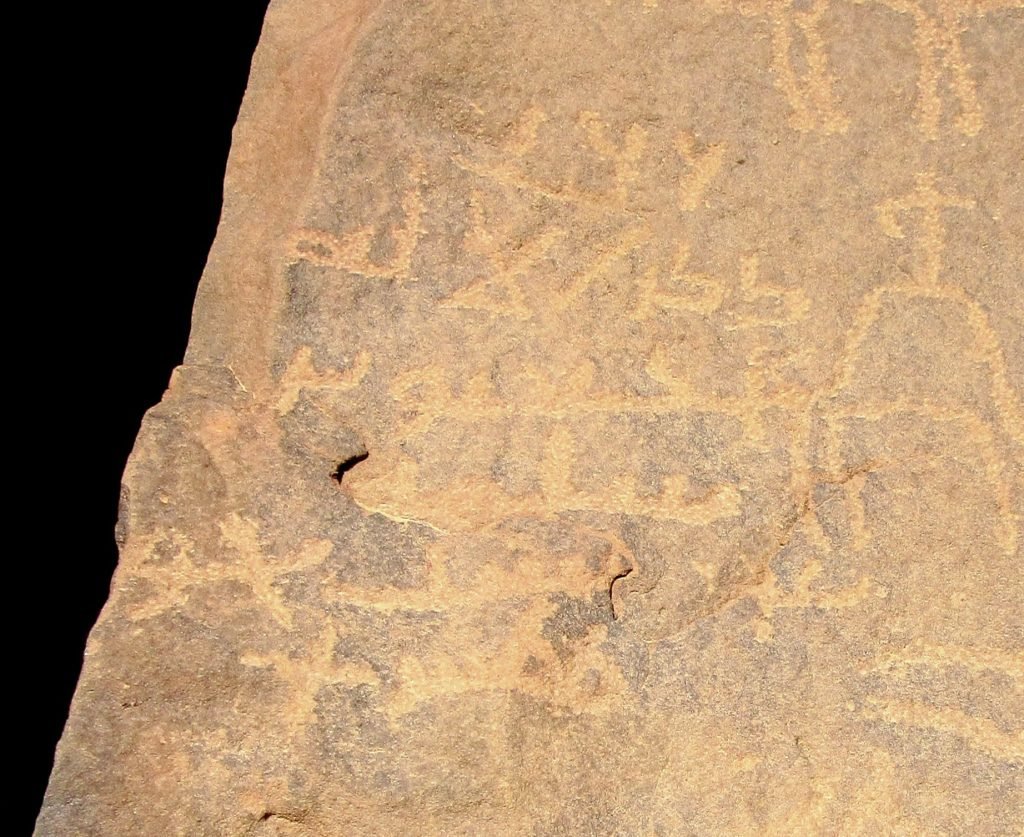
In addition to the name of God, many features that later became important for Islam appeared in pre-Islamic Arabia, in both polytheistic and monotheistic contexts. We have an example of the prayer ‘bismillah’ in a pre-Islamic inscription. An inscription was found in Yemen, quote ‘bismillahirrahmanirrahim assamwat’ which has been translated by Ahmad Al-Jallad as ‘in the name of Allah, the Rahman (merciful and compassionate), have mercy upon us, O lord of the heavens.’ Except for the last part, ‘lord of the heavens,’ this is the prayer that starts every chapter of the Quran, except for one, and is a major aspect of the Islamic religion. From surrounding evidence, this has been dated to the sixth century. It is suggested that this carving is evidence that the form of the Bismillah predates the year of Mohammed’s first announcement of the Qur’an (610 CE) and that this is a greeting by Solomon to the Queen of Sheba, the Qur’an’s most prominent South Arabian reference.
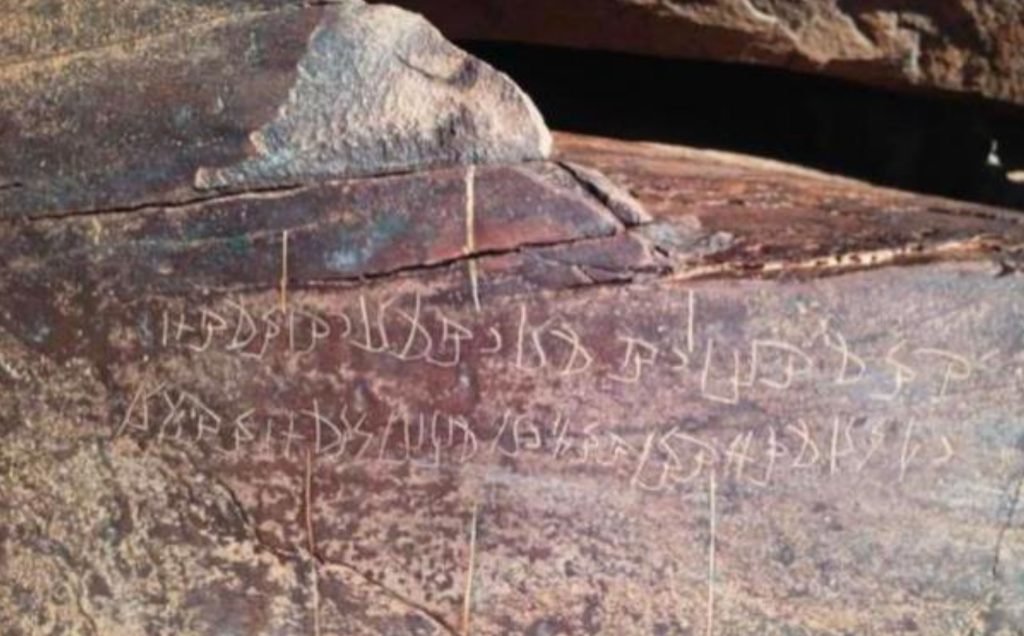
Another concept that appeared in pre-Islamic Arabia was of shrines, dedicated to specific deities across Arabia. This is connected to one of the most central and important rituals or rights or practices of the pre-Islamic Arabs, that of the pilgrimage. Pilgrimages – called Hajj in Islam – are undertaken to a shrine or sanctuary at a specific time during the year like an annual festival or celebration. These shrines or special places were called Haram, where all forms of violence were forbidden. The most common sanctuary visited by pilgrims in pre-Islamic Arabia was the Kaaba, in Mecca. The classic narrative is that the Kaaba – thought by Muslims to have been built by Abraham himself – served as an important site of pilgrimage for people across Arabia and housed the images and statues of many different gods. This was before the Kaaba was liberated and once again dedicated to the one monotheistic God by Muhammad (SAW). The arrival of Islam and our information about the general practices of pilgrimage in pre-Islamic times corroborate this story. Other connections or similarities to the later Islamic tradition can be found in the rules relating to ritual purity. For example, before going on a pilgrimage or praying to a god or before any kind of religious rite, the worshiper was expected to make ablutions, purify himself and wash himself to enter a state of ritual purity.
There are other beliefs and practices that we don’t have too much information about, for example, the Arabs believed in other mysterious beings such as the djinn – creatures who would hang around in abandoned ruins and dark places. We also know of various occult practices such as divination and techniques involving the evil eye. Poetry also played a major role in the lives of the ancient Arabs and poets were sometimes considered to be inspired by the divine beings to recite their verses. In less extravagant circumstances, poetry served an important function of storytelling and the literary form that held the highest esteem in this culture.
The most famous collection of pre-Islamic poetry, the Mu’allaqat or hanging poems, is another important source for the culture and traditions of the Arabs at this time, as well as being some of the greatest literary achievements in the Arabic language.
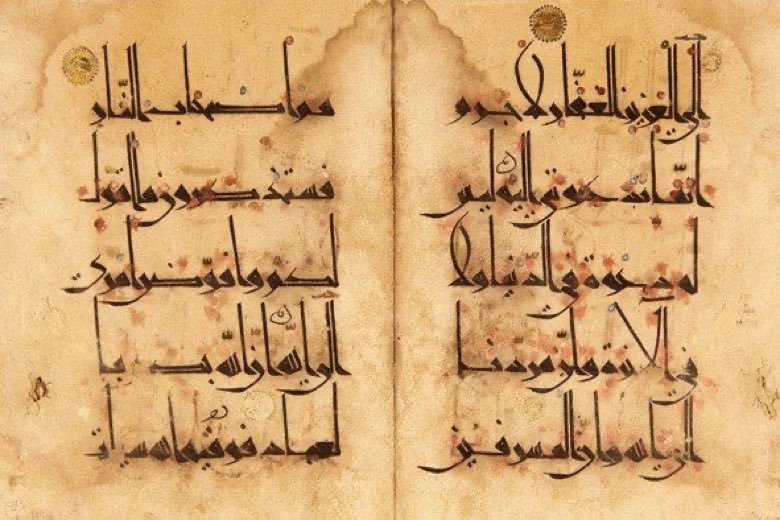
Given all of this, we can see that by the time of the Prophet Muhammad, Arabia was a melting pot of different religious and intellectual traditions. While polytheism or paganism was probably the religion practised by the majority of the population, there were still strong monotheistic communities, including Jews, Christians and other monotheistic groups like the Hanifia.
Thus, we can see that things were far more complex than the traditional narrative that was presented at the beginning of this article. It is in this context that a Prophet by the name of Muhammad would appear on the scene and change world history.
